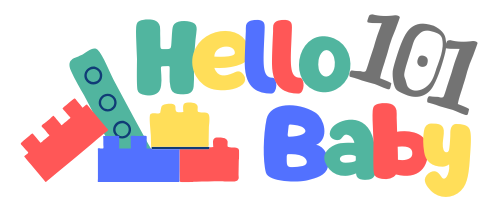Getting your four year old to listen can feel challenging on a daily basis. If you are wondering how to get a 4 years old to listen to you without having to repeat yourself or raise your voice, you are not alone, many parents face the same issue.
Research and programmes such as Triple P suggest that simple, positive strategies are effective. Reading aloud, engaging in conversation, and adapting your approach to suit your child’s age can make a real difference.
Aim to remain patient and maintain a cheerful attitude, as this often helps when considering how to get a 4 years old to listen to you.
Why Listening Is Hard at 4
Developmental Factors
You might notice your four year old seems to listen one moment and tune out the next. This is completely normal.
At this age, your child’s brain is growing fast. They are learning new skills every day, but listening is still a work in progress.
Here are some key milestones that shape how your child listens:
- They can follow instructions with two or three steps.
- They start to understand ideas like “same” and “different”.
- They enjoy counting and can recognise numbers.
- They tell and recall parts of stories.
- They speak in complete sentences and use better grammar.
- They communicate more clearly.
- They play with others and try to solve small conflicts.
- They ask “why” questions to learn more.
- They can focus on a task for about 5 to 15 minutes.
- They sort and group objects by colour or size.
- They remember parts of a story and answer simple questions.
Your child’s curiosity and growing memory help them listen, but their attention span is still short. You may need to repeat things or break instructions into smaller steps.
Common Distractions
Distractions are everywhere for a four year old. Sometimes, even the smallest thing can pull their attention away from you.
Here’s a quick look at what might get in the way:
| Distraction Type | What It Looks Like | How It Affects Listening |
| Auditory and Visual | TV, music, toys, people moving around | Short attention, especially with constant noise |
| Comprehensible Auditory | Hearing familiar voices or language | More likely to lose focus, need reminders |
| Incomprehensible Noise | Foreign language, random sounds | Less distracting, sometimes helps focus |
| General Noise | Background chatter, TV, appliances | Can make it hard to listen, especially if not interested |
You might see your child try to block out noise or talk to themselves to stay focused. Sometimes, they just get lost in their own world.
That’s all part of being four. If you keep instructions short and remove distractions when possible, you’ll help your child listen better.
How to Get a 4 Years Old to Listen to You
Gain Attention First
If you want to know how to get a 4 years old to listen to you, start by making sure you have their full attention. Four year olds live in a world full of distractions.
Toys, screens, and even their own thoughts can pull them away from what you are saying. Before you speak, pause and check that your child is looking at you.
Try these steps:
- Say their name gently to get their focus.
- Move to their level by kneeling or sitting beside them.
- Make eye contact and smile.
- Stop any background noise or ask them to put down what they are doing.
Children respond better when you connect with them face to face. Shouting from another room rarely works. If you want to know how to get a 4 years old to listen to you, always start by being present and calm.
Use Simple Language
Once you have their attention, keep your words short and clear. Young children process language differently from adults.
Research shows that children’s ability to understand what you say depends on their vocabulary and how you structure your sentences. Using simple language helps your child follow instructions and builds their confidence.
- Use short sentences with one idea at a time.
- Avoid long explanations or complicated words.
- Give instructions in the order you want them done.
Many early language programmes use these techniques to help children listen better. For example, activities that focus on vocabulary, storytelling, and asking questions make language easier to understand.
When you use simple words and repeat key points, your child is more likely to remember and respond. If you are wondering how to get a 4 years old to listen to you, remember that less is often more.
Children learn best when you speak clearly and keep things simple. This makes it easier for them to process what you say and act on it.
Positive Instructions
Say What to Do
You might feel tempted to say “Don’t run!” or “Stop shouting!” when your child gets too excited. However, telling your four year old exactly what you want them to do works much better.
When you use clear, positive instructions, you help your child understand what behaviour you expect. For example, instead of saying “No hitting,” you could say “Keep your hands to yourself” or “Use gentle hands.” This approach gives your child a clear action to follow.
Child psychologists like Dr. Kristin Carothers explain that children often know what “no” means but do not always know what to do instead. If you say “Don’t jump on the sofa,” your child might not know where to put their energy. Try saying “Sit on the sofa with your feet on the floor.” This way, you guide them towards the right behaviour.
Give instructions that are specific and realistic. For example, “Please pick up your toys and put them in the box” works better than “Don’t make a mess.” Clear requests help your child succeed and reduce frustration for both of you.
Avoid Negatives
Negative commands like “no” or “don’t” often invite resistance. Children at this age can feel challenged by these words and may push back. Using positive instructions helps you avoid power struggles and builds a better connection.
When you focus on what your child should do, you encourage them to repeat good behaviour. Labeled praise, such as “Thank you for using your quiet voice,” helps your child feel proud and eager to listen again.
Research shows that positive instructions also benefit you as a parent. You become more thoughtful and calm, which leads to clearer communication.
This method is a key part of how to get a 4 years old to listen to you. By shifting your attention to positive actions, you create a happier and more cooperative home.
Offer Choices
Simple Options
You probably notice your four year old wants to feel in control sometimes. That’s completely normal. When you offer simple choices, you help your child feel empowered and more willing to listen.
You don’t need to give endless options—just two or three within clear boundaries work best. For example, you might ask, “Would you like the red cup or the blue cup?” or “Do you want to read a story before bed or after your bath?” These small decisions give your child a sense of ownership.
Children respond well when you:
- Offer two clear options you are happy with.
- Keep choices simple and age appropriate.
- Use choices to guide behaviour, not to remove boundaries.
Only give choices you can accept. If you say, “Do you want to wear your coat or carry it?” make sure both are fine with you.
Recent studies show that offering limited, acceptable choices helps children feel in control and reduces resistance. You’ll often see fewer power struggles and more cooperation.
Simple options like picking a snack, choosing a book, or deciding which shoes to wear can turn daily routines into positive moments. When you praise your child for making a choice, you reinforce good behaviour and build their confidence.
Empower Decision Making
Empowering your child to make decisions does more than just get them to listen—it helps them feel valued and heard. When you involve your child in small decisions, you show that their opinions matter. This builds trust and encourages them to share their feelings with you.
Children who help make decisions often listen better because they feel respected. You create a partnership, not just a set of rules. Try thinking aloud when you make choices, like saying, “I’m deciding whether to have tea or coffee. What do you think?” This models decision making and invites your child to join in.
Empowering decision making also supports your child’s self worth and assertiveness. When you acknowledge their views, even in small ways, you help them become active participants in family life.
Over time, your child learns to express needs, cooperate, and engage more fully. This simple shift can make listening a natural part of your daily routine.
Connect Emotionally
Acknowledge Feelings
You might notice your four year old sometimes acts out or ignores you when big feelings take over. When you acknowledge their emotions, you help them feel seen and understood.
Try saying things like, “I see you’re feeling sad,” or “It looks like you’re frustrated.” This simple step can calm your child and open the door to better listening.
- Encourage your child to name their feelings out loud.
- Use active listening—nod, make eye contact, and repeat back what you hear.
- Show them how to use words for their emotions by modelling phrases like, “I feel happy when we play together.”
- Keep a calm, steady voice, even if your child is upset.
- Use visual tools, such as emotion charts, to help your child point to how they feel.
- Create routines so your child knows what to expect, which helps them feel safe.
- Praise your child when they talk about their feelings or try to solve problems.
Children who feel heard are more likely to listen in return. Warm, responsive relationships and co regulation help your child manage emotions and join in with others. Programmes that focus on emotional communication, like talking about what causes feelings, have shown real improvements in children’s social skills and behaviour.
Teach Empathy
Empathy is a skill you can teach every day. When you help your child understand how others feel, you build their social confidence and listening skills.
You might ask, “How do you think your friend felt when you shared your toy?” or use stories to talk about characters’ feelings.
Research shows that children who learn empathy become better at making friends and working in groups. Schools that teach empathy see children become kinder and more respectful. These children listen more because they care about others’ feelings and want to connect.
You can use role play, arts, or group games to practise empathy at home. When you celebrate small acts of kindness, you encourage your child to keep trying. Over time, your child learns that listening is not just about hearing words—it’s about caring for others, too.
Model Listening
Show Attentiveness
If you want your child to listen, you need to show them what good listening looks like. When you give your full attention, your child feels valued and understood. Here are some ways you can show attentiveness:
- Focus on positive behaviours. Notice when your child is doing something well and let them know.
- Use descriptive praise. Say things like, “I love how you are sharing your crayons with your sister.” This helps your child understand what you like.
- Ignore small misbehaviours in the moment. Save your attention for when your child calms down.
- Offer positive attention in different ways. Try verbal praise, hugs, high fives, or small rewards.
- Avoid giving attention to negative behaviour straight away. Children often repeat actions that get a big reaction.
When you model attentiveness, you teach your child how to listen and respond. This is a key part of how to get a 4 years old to listen to you. Children learn by watching you, so your actions speak louder than words.
Reflect Back
Reflecting back is a powerful way to show your child you are really listening. You can do this by repeating what your child says in your own words or by summarising their main points. This helps your child feel heard and encourages them to share more.
- Paraphrase your child’s words to check you understand.
- Summarise what they are saying to capture the main idea.
- Respond with empathy. For example, say, “It sounds like you felt sad when your toy broke.”
- Use reflective statements to mirror your child’s feelings and thoughts.
Reflective listening helps your child develop emotional awareness. It also builds trust and keeps communication open. When you use these techniques, your child learns that their words matter. This makes it easier for them to listen to you in return.
Positive Reinforcement
Praise and Rewards
Some days, your four year old listens well. Other days, they might not. Positive reinforcement can really help. When you praise good listening, your child wants to do it again.
Be clear with your praise. Instead of “Good job,” try, “I like how you put your toys away.” This shows your child what you liked.
You can use different rewards to motivate your child. Here’s a table showing what works for preschoolers:
| Positive Reinforcement Strategy | Description | Impact on Listening Behaviour |
| Verbal Praise | Honest words like “Great listening!” | Builds confidence and helps them repeat it |
| Non verbal Gestures | Smiles, high fives, nods | Gives quick feedback and keeps them interested |
| Activity Reinforcers | More playtime or a favourite game | Makes listening fun and rewarding |
| Tangible Rewards | Stickers, tokens, or small treats | Gives clear reasons to listen carefully |
| Social Reinforcers | Clapping, praise from others | Increases motivation and social skills |
A reward chart can also help. Use simple words or pictures so your child can track progress. Give rewards right after good behaviour.
This keeps your child interested and helps them learn what you want. Over time, you can stop the rewards as listening becomes normal. If you want your four year old to listen, positive reinforcement is a good method.
Say Thank You in Advance
Saying “thank you” before your child does something may seem strange. But it really works. When you say, “Thank you for putting your shoes on,” you show trust and set a good example. This gentle way helps your child feel noticed and more likely to help.
- Saying thank you first is a kind reminder.
- It helps your child move from saying no to saying yes.
- Your child feels important and close to you.
- You avoid arguments and make it easier for them to listen.
Try leaving a note or just saying thank you with a smile. Your child will often listen better and feel proud to help. This small change can make listening part of every day.
Set Clear Expectations
Consistent Rules
You might notice your four year old tests boundaries from time to time. That’s normal. Children feel safer and more confident when they know what you expect.
Setting clear and consistent rules helps your child understand exactly what to do. When you stick to the same rules every day, you avoid confusion and frustration. Your child learns to predict your reactions and feels secure.
- Use simple language to explain rules. For example, say, “We use gentle hands,” or “Toys go back in the box after play.”
- Keep rules short and easy to remember.
- Follow through every time. If you say bedtime is at seven, keep it the same each night.
- Praise your child when they follow the rules. Positive feedback encourages good behaviour.
Children thrive on routines. When you create regular habits around chores or play, you help your child develop responsibility and self discipline. Consistent routines also make your home feel calm and safe.
Sometimes, your child may struggle to follow the rules. If this happens, a brief time out can help. Time outs are not punishments.
They give your child a chance to calm down and think. Experts recommend keeping time outs short—just one to three minutes.
Always explain why you are using a time out and stay calm. Afterward, reconnect with your child and praise them for trying again.
Prepare for Transitions
Moving from one activity to another can be tough for young children. You can make transitions smoother by giving advance warnings.
Try saying, “In five minutes, we’ll tidy up and get ready for lunch.” Visual cues, like picture cards or a favourite song, also help your child know what’s coming next.
Here are some ways to make transitions easier:
- Give a gentle verbal warning before changing activities.
- Use songs or clapping rhythms to signal it’s time to switch.
- Involve your child by letting them be the “helper” during clean up.
- Turn transitions into a game, like “Can you find all the red blocks before the song ends?”
- Praise your child when they move on quickly and calmly.
When you prepare your child for changes, you help them feel secure and ready to listen. These small steps build patience, teamwork, and self control—skills that will help your child for years to come.
Use Humour and Patience
Lighten the Mood
You know those moments when your four year old just will not listen? Sometimes, a little laughter can work wonders.
Humour helps break tension and makes tricky situations feel lighter. You might pull a silly face, use a funny voice, or turn a request into a playful game. For example, you could say, “Can you hop like a bunny to the bathroom?” instead of just asking them to go. Children love to laugh, and when you make things fun, they often join in and listen without a fuss.
- Try making up a silly song about tidying up.
- Pretend to be a robot giving instructions.
- Use gentle jokes to distract from frustration.
Tip: Laughter is a great way to connect. When you share a giggle, you remind your child that listening does not have to feel like a chore.
Stay Calm
Staying calm can feel tough, especially when your child ignores you for the tenth time. You might feel annoyed or even embarrassed.
That is normal. The good news is, you can practise staying calm and teach your child by example. Start by taking a deep breath and slowing down. Give yourself a moment to think before you react. This pause helps you avoid shouting or saying something you regret.
Mindfulness can help you keep your cool. When you notice your own feelings—like frustration or worry—you can accept them instead of blaming your child. Speak your feelings out loud: “I feel upset right now, so I am going to take a breath.” This shows your child how to handle big emotions. Children learn from what you do, not just what you say.
You can also focus on positive outcomes. Instead of worrying about what might go wrong, picture your child listening and cooperating. This shift in thinking helps you feel more in control and keeps stress levels down. Calm is contagious. When you stay steady, your child feels safer and is more likely to listen.
Remember, patience grows with practice. Every calm moment you model helps your child learn to manage their own feelings, too.
You have a toolkit of practical tips to help your four year old listen better. Research shows that children often make real progress with these strategies, even if long term results need more study.
Every child learns at their own pace. Some may need extra support, especially if they find listening tricky at first. Celebrate small wins like following directions, joining in games, or making eye contact.
Remember, patience and consistency matter most. Each step forward—no matter how small—deserves a little cheer. Keep going, and you’ll see your child’s listening skills grow.
FAQ
What if my child still does not listen after I try these tips?
You might feel frustrated, but that is normal. Keep using the tips. Children need time to learn new habits. If you worry, talk to your health visitor or GP for extra support.
How can I help my child listen without shouting?
Try to stay calm and use a gentle voice. Get down to your child’s level and make eye contact. Use their name before you speak. Praise good listening straight away.
Children respond better when you speak softly and clearly.
Is it normal for four year olds to ignore instructions sometimes?
Yes, it is very common. Four year olds have short attention spans and get distracted easily. You are not alone if your child sometimes tunes you out.
Should I use time outs if my child refuses to listen?
You can use a short time out as a calm down tool. Explain why you are using it. Keep it brief—one to three minutes works best. Always reconnect with your child afterwards.
How do I know if my child’s listening problems are serious?
Most children improve with practice. If your child never responds, struggles to follow simple instructions, or you notice hearing issues, speak to your GP. Early support can help.



